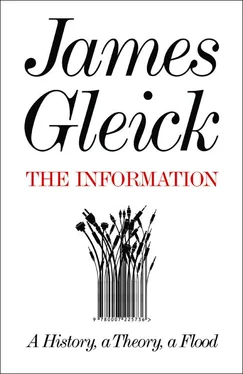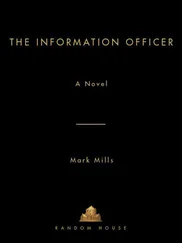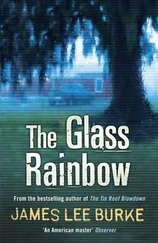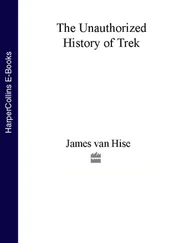The English language no longer has such a thing as a geographic center, if it ever did. The universe of human discourse always has backwaters. The language spoken in one valley diverges from the language of the next valley, and so on. There are more valleys now than ever, even if the valleys are not so isolated. “We are listening to the language,” said Peter Gilliver, an OED lexicographer and resident historian. “When you are listening to the language by collecting pieces of paper, that’s fine, but now it’s as if we can hear everything said anywhere. Take an expatriate community living in a non-English-speaking part of the world, expatriates who live at Buenos Aires or something. Their English, the English that they speak to one another every day, is full of borrowings from local Spanish. And so they would regard those words as part of their idiolect, their personal vocabulary.” Only now they may also speak in chat rooms and on blogs. When they coin a word, anyone may hear. Then it may or may not become part of the language.
If there is an ultimate limit to the sensitivity of lexicographers’ ears, no one has yet found it. Spontaneous coinages can have an audience of one. They can be as ephemeral as atomic particles in a bubble chamber. But many neologisms require a level of shared cultural knowledge. Perhaps bada-bing would not truly have become part of twenty-first-century English had it not been for the common experience of viewers of a particular American television program (though it is not cited by the OED ).
The whole word hoard—the lexis—constitutes a symbol set of the language. It is the fundamental symbol set, in one way: words are the first units of meaning any language recognizes. They are recognized universally. But in another way it is far from fundamental: as communication evolves, messages in a language can be broken down and composed and transmitted in much smaller sets of symbols: the alphabet; dots and dashes; drumbeats high and low. These symbol sets are discrete. The lexis is not. It is messier. It keeps on growing. Lexicography turns out to be a science poorly suited to exact measurement. English, the largest and most widely shared language, can be said very roughly to possess a number of units of meaning that approaches a million. Linguists have no special yardsticks of their own; when they try to quantify the pace of neologism, they tend to look to the dictionary for guidance, and even the best dictionary runs from that responsibility. The edges always blur. A clear line cannot be drawn between word and unword.
So we count as we can. Robert Cawdrey’s little book, making no pretense to completeness, contained a vocabulary of only 2,500. We possess now a more complete dictionary of English as it was circa 1600: the subset of the OED comprising words then current. That vocabulary numbers 60,000 and keeps growing, because the discovery of sixteenth-century sources never ends. Even so, it is a tiny fraction of the words used four centuries later. The explanation for this explosive growth, from 60,000 to a million, is not simple. Much of what now needs naming did not yet exist, of course. And much of what existed was not recognized. There was no call for transistor in 1600, nor nanobacterium , nor webcam , nor fen-phen . Some of the growth comes from mitosis. The guitar divides into the electric and the acoustic; other words divide in reflection of delicate nuances (as of March 2007 the OED assigned a new entry to prevert as a form of pervert , taking the view that prevert was not just an error but a deliberately humorous effect). Other new words appear without any corresponding innovation in the world of real things. They crystallize in the solvent of universal information.
What, in the world, is a mondegreen ? It is a misheard lyric, as when, for example, the Christian hymn is heard as “Lead on, O kinky turtle . . .”). In sifting the evidence, the OED first cites a 1954 essay in Harper’s Magazine by Sylvia Wright: “What I shall hereafter call mondegreens, since no one else has thought up a word for them.” She explained the idea and the word this way:
When I was a child, my mother used to read aloud to me from Percy’s Reliques, and one of my favorite poems began, as I remember:
Ye Highlands and ye Lowlands ,
Oh, where hae ye been ?
They hae slain the Earl Amurray ,
And Lady Mondegreen .
There the word lay, for some time. A quarter-century later, William Safire discussed the word in a column about language in The New York Times Magazine . Fifteen years after that, Steven Pinker, in his book The Language Instinct , offered a brace of examples, from “A girl with colitis goes by” to “Gladly the cross-eyed bear,” and observed, “The interesting thing about mondegreens is that the mishearings are generally less plausible than the intended lyrics.” But it was not books or magazines that gave the word its life; it was Internet sites, compiling mondegreens by the thousands. The OED recognized the word in June 2004.
A mondegreen is not a transistor, inherently modern. Its modernity is harder to explain. The ingredients—songs, words, and imperfect understanding—are all as old as civilization. Yet for mondegreens to arise in the culture, and for mondegreen to exist in the lexis, required something new: a modern level of linguistic self-consciousness and interconnectedness. People needed to mishear lyrics not just once, not just several times, but often enough to become aware of the mishearing as a thing worth discussing. They needed to have other such people with whom to share the recognition. Until the most modern times, mondegreens, like countless other cultural or psychological phenomena, simply did not need to be named. Songs themselves were not so common; not heard, anyway, on elevators and mobile phones. The word lyrics , meaning the words of a song, did not exist until the nineteenth century. The conditions for mondegreens took a long time to ripen. Similarly, the verb to gaslight now means “to manipulate a person by psychological means into questioning his or her own sanity”; it exists only because enough people saw the 1944 film of that title and could assume that their listeners had seen it, too. Might not the language Cawdrey spoke—which was, after all, the abounding and fertile language of Shakespeare—have found use for such a word? No matter: the technology for gaslight had not been invented. Nor had the technology for motion pictures.
The lexis is a measure of shared experience, which comes from inter-connectedness. The number of users of the language forms only the first part of the equation: jumping in four centuries from 5 million English speakers to a billion. The driving factor is the number of connections between and among those speakers. A mathematician might say that messaging grows not geometrically, but combinatorially, which is much, much faster. “I think of it as a saucepan under which the temperature has been turned up,” Gilliver said. “Any word, because of the interconnectedness of the English-speaking world, can spring from the backwater. And they are still backwaters, but they have this instant connection to ordinary, everyday discourse.” Like the printing press, the telegraph, and the telephone before it, the Internet is transforming the language simply by transmitting information differently. What makes cyberspace different from all previous information technologies is its intermixing of scales from the largest to the smallest without prejudice, broadcasting to the millions, narrowcasting to groups, instant messaging one to one.
This comes as quite an unexpected consequence of the invention of computing machinery. At first, that had seemed to be about numbers.
Читать дальше











